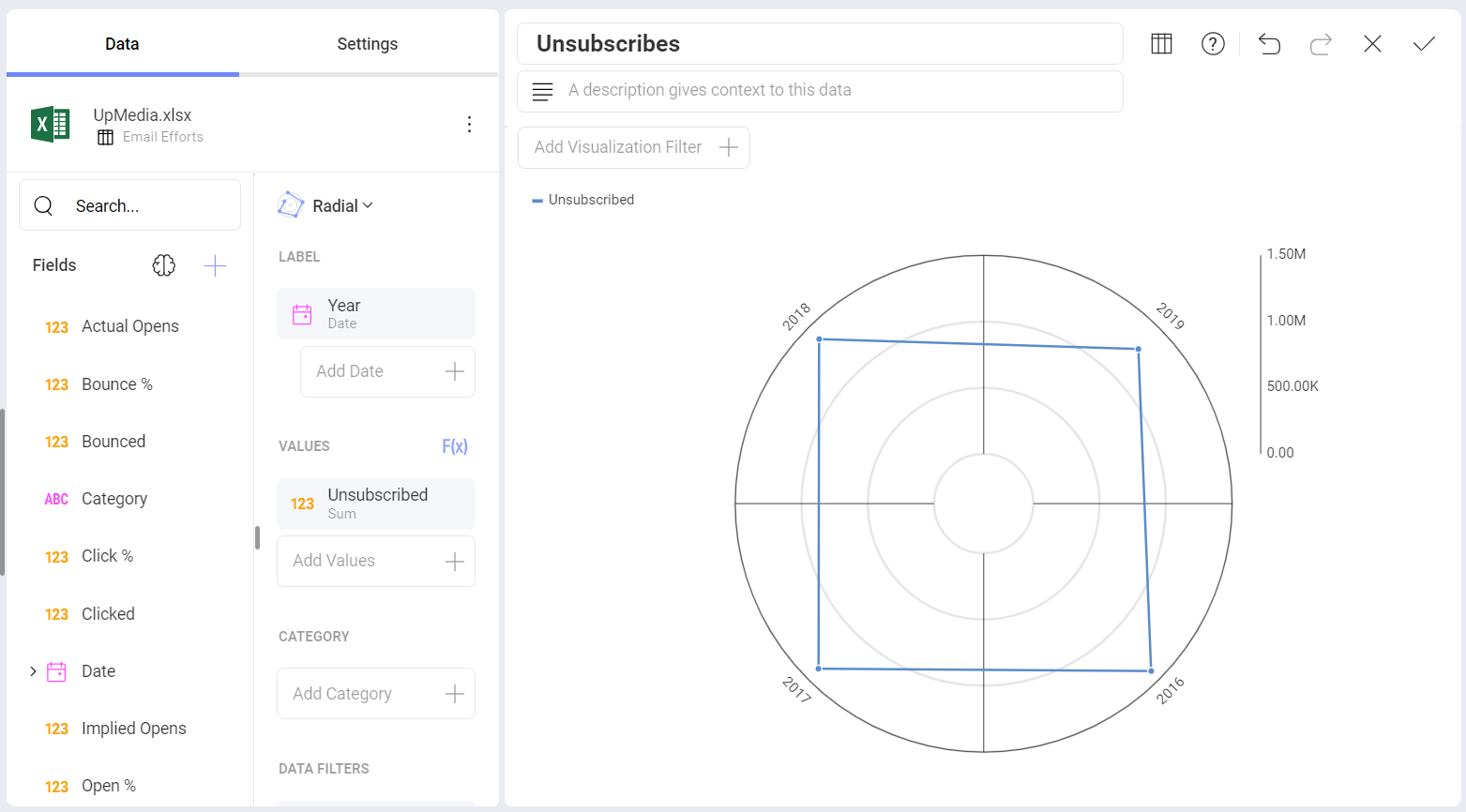Radial Area Features

Radial area features are a type of data visualization that allows users to view multiple data series simultaneously in a circular format. This unique visualization method allows users to easily compare data sets and identify patterns and trends.
In this blog post, we will explore the benefits of using radial area features and how they can be used to enhance data visualization.
Easy Comparison of Data Sets Radial area features are particularly effective when used to compare multiple data sets. The circular format allows users to see how each data series relates to the others, making it easy to identify similarities and differences between the data sets.
Highlighting Patterns and Trends Radial area features are also effective at highlighting patterns and trends in data. The circular format allows users to easily see where peaks and valleys occur in the data, and how they relate to each other. This makes it easy to identify trends and patterns that might be missed in other types of data visualizations.
Customizable Appearance Radial area features are highly customizable, allowing users to tailor the visualization to their specific needs. Colors, labels, and axes can all be adjusted to make the visualization more effective for the specific data being presented.
Ideal for Large Data Sets Radial area features are particularly effective when dealing with large data sets, as they can display a large amount of data in a compact space. This makes it easier to view and understand large amounts of data quickly and efficiently.
Suitable for a Variety of Data Types Radial area features are versatile and can be used to visualize a wide range of data types, including financial data, scientific data, and more. This makes them a valuable tool for researchers, analysts, and data scientists in a variety of industries.
Conclusion
Radial area features are a powerful and versatile data visualization tool that can be used to effectively display large amounts of data in a compact space. They are particularly effective at highlighting patterns and trends in data sets, and can be customized to meet the specific needs of the user. As data sets continue to grow in size and complexity, radial area features will continue to be an essential tool for researchers, analysts, and data scientists.
